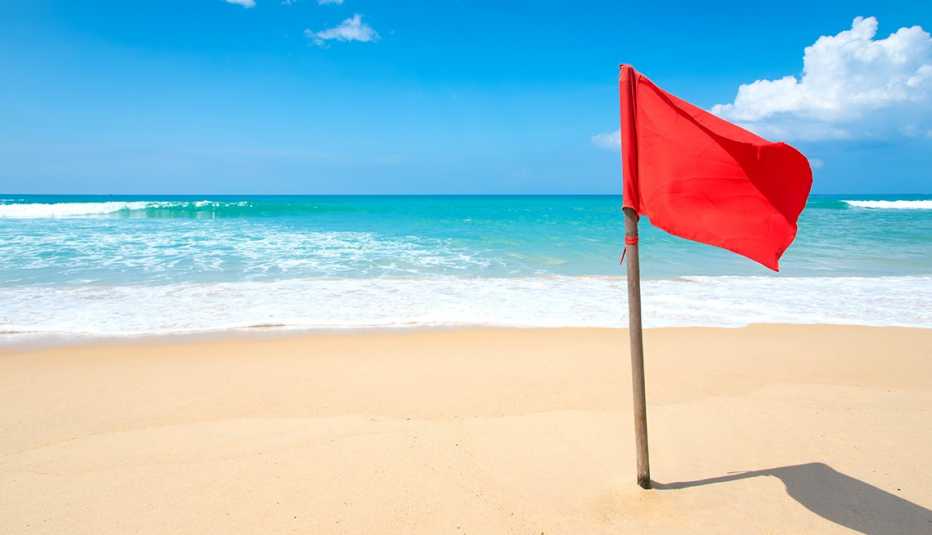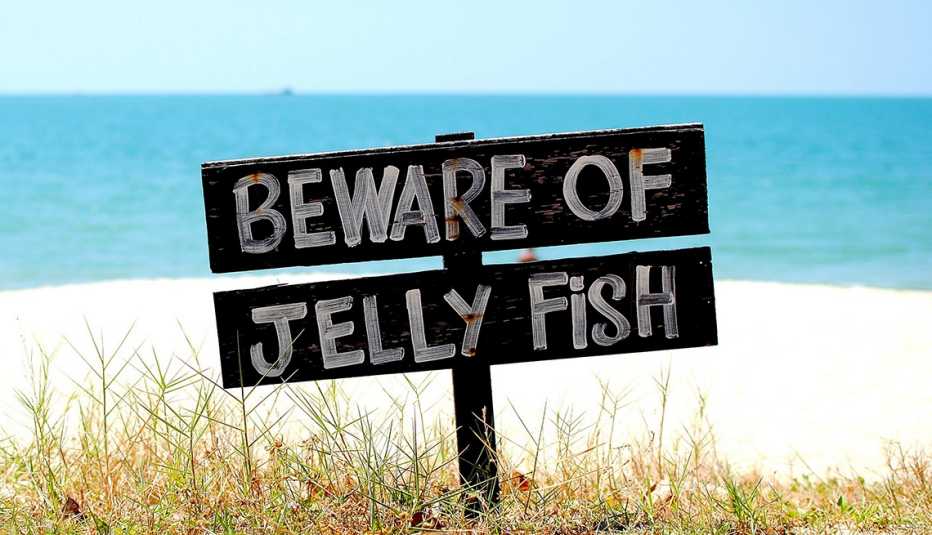AARP Hearing Center


Summer’s in full swing. For many of us, that means spending the day at the beach.
But the beach isn’t all fun and relaxation. We may fear lurking sharks when we dive into ocean waters, but shark attacks are extremely rare. Other health problems are much more common — from heat stroke to jellyfish to sunburn. It’s smart to go in prepared, so you can focus on having a good time.
Here are six dangers to know about before your next beach day.
1. Heat illness
Heat illness is a spectrum of conditions that occur when the body can no longer cool itself down. “This can be seen in high heat conditions, often made worse when there is high humidity or during vigorous exercise,” says Lea Walters, M.D., chair of emergency medicine at the Loma Linda University School of Medicine in California.
Heat cramps — painful muscle spasms in the legs and abdomen — are often the first hint that you’ve lost too much fluid, salt or both, notes the National Weather Service.
Next is heat exhaustion. As you continue losing water and salt, you may notice symptoms like headache, nausea, dizziness and irritability. It’s vital to move to a cooler area and sip cool water. Otherwise you may develop heat stroke.
Heat stroke is the most serious heat-related illness. According to the Centers for Disease Control and Prevention (CDC), the body temperature can climb to 106 degrees Fahrenheit within 10 to 15 minutes. This can cause confusion, slurred speech, seizures, a strong and rapid pulse, and loss of consciousness.
Heat stroke is a severe medical emergency, and delaying treatment can be fatal.
Anyone can get heat stroke, but older adults, people with high blood pressure and those taking water pills (diuretics) have an increased risk.
To keep heat illness from wrecking your beach day, stay hydrated and take regular breaks from the heat, suggests Michael D. Levine, M.D., an emergency medicine and medical toxicology physician with UCLA Health in Los Angeles.
2. Sunburn
Sunburn is an inflammatory reaction to ultraviolet (UV) radiation damage. Symptoms like skin redness and tenderness typically start about four hours after sun exposure, with pain peaking after 48 hours.
But the damage lingers long after the sunburn fades. “In addition to the discomfort they cause, sunburns significantly increase our risk of skin cancer,” says Lauren Eckert Ploch, M.D., a dermatologist in Augusta, Georgia.
In fact, sunburn is the leading cause of many types of skin cancer, including melanoma, the deadliest form of skin cancer. And it only takes five or more sunburns to double your risk of melanoma, according to the Skin Cancer Foundation.
“The best way to avoid a sunburn is to regularly apply a broad-spectrum sunscreen while at the beach,” Eckert Ploch says. Look for a sunscreen that’s water-resistant, with an SPF of 30 or higher. Be sure to slather it on every two hours, or after swimming or sweating.
“I also recommend using sun-protective clothing and a hat, plus staying under a shade during peak sun exposure times,” Eckert Ploch says. Your risk of sunburn increases when the sun is strongest — between 10 a.m. and 2 p.m., notes the American Academy of Dermatology.




































































More From AARP
How You Can Stay Safe This Summer
Follow these tips so you and your family can enjoy summertime activities
6 Ways to Get a Sun-Free Vacation Glow
Avoid the damaging rays and fake a golden tan
How to Stay Healthy as Summer Temps Rise
Strategies to avoid heatstroke, other illness on sweltering days